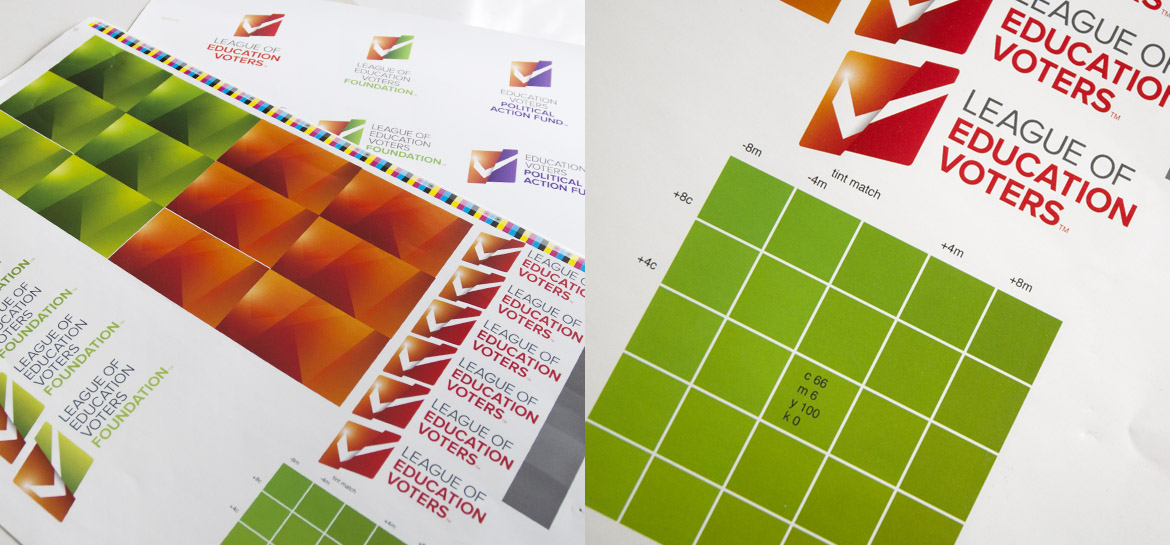
Riveting insights on digital printing
Digital printing technology has evolved to the place where it can be a good alternative to traditional offset under the right circumstances — maybe too good. On a brand identity project for the League of Education Voters (LEV), we learned that digital and offset printing can yield different results that become a challenge when color consistency is required.
Business cards are a perfect candidate for digital printing because you can print in full (CMYK) color, and at the lower quantities associated with most business card runs, digital tends to be cheaper than offset. Printing CMYK business cards is somewhat impractical because most 4-color presses are too big for business cards (20 x28 sheet size and up) so unless you have a large number of individual cards to print, CMYK offset doesn’t make economic sense.
LEV needed business cards soon after design was approved, so we finalized the art and got them on the digital press at Quality Press. The results were great; bright, saturated colors, crisp graphics and type. Quantity for each card was 1,000, which is the break point for digital — quantities above that number quickly become more expensive than offset.
When the time came to print letterhead and envelopes, the higher quantities required made printing digitally unfeasible from a cost standpoint.
The problem is that offset and digital inks do not perfectly match. Digital inks are polymer-based, and tend to “sit up” on the substrate instead of absorbing (called dot gain) like soy-based offset inks tend to do. Digital inks print colors with more saturation — which is great — except when your digital business cards need to match your offset-printed letterhead.
The solution was to run a press test with a number of Pantone and CMYK color formulations. Quality Press tested logos, background imagery, and solid colors. After 2 press tests and numerous adjustments to the color formulation, we were able to arrive at an acceptable color match.
Until digital printing technology advances to the place where printing higher quantities are economically feasible, this issue will remain a challenge for anyone involved in managing brand assets. Designers should be aware of the need to print in both digital and offset, adding to an already demanding environment that requires brand standards to perform in all print and screen-based applications.
To learn about the League of Education Voters brand project, click or touch this.
